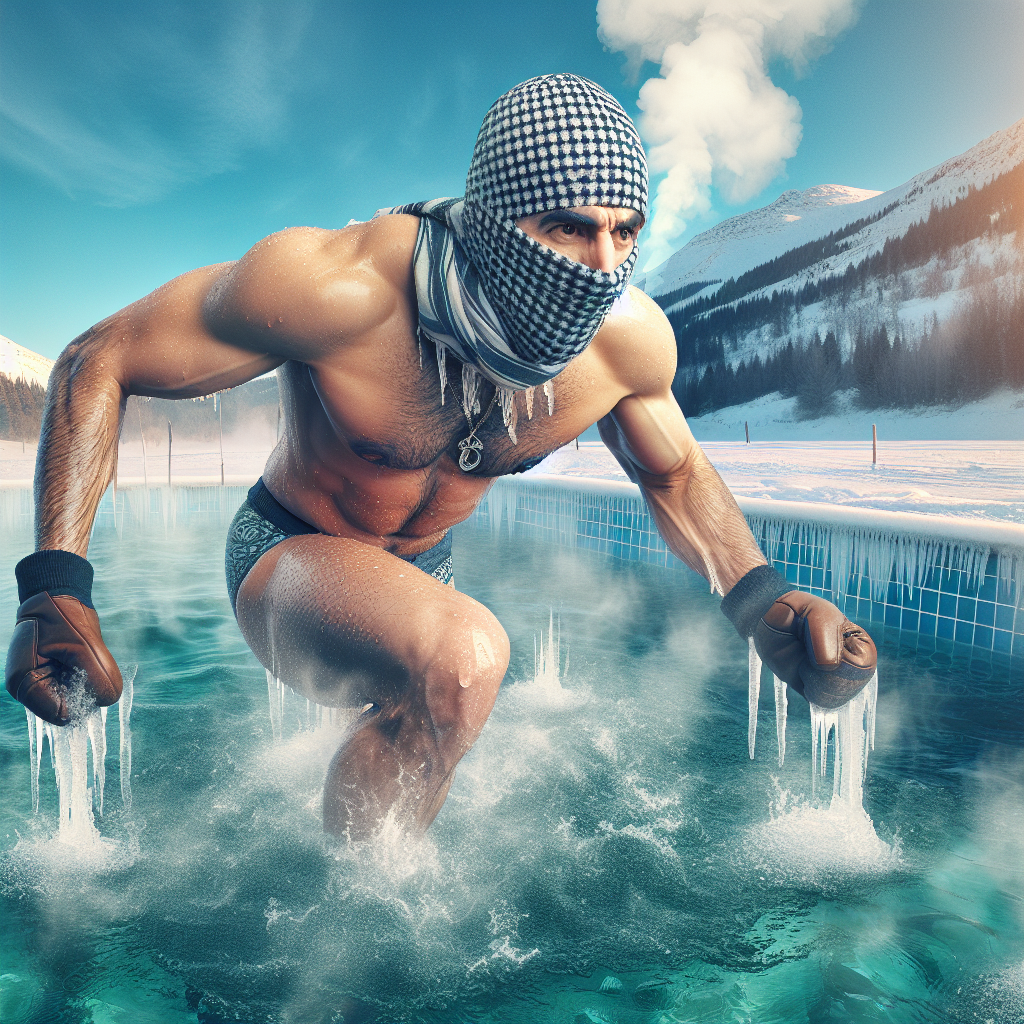Pleased to have you here, dear reader! You’ve mastered the basics, conquered the initial challenges, and now, you’re ready to step up your game even further in the world of cold plunge therapy. This screen in front of you is your essential guide to “Advanced Cold Plunge Techniques for Seasoned Practitioners”, where you’ll explore sophisticated strategies to get the most out of your chilling dips. With precision and perseverance wrapped in your eagerness to learn, you’ll soon uncover the keys to unlock the most profound benefits of cold plunge within these upcoming sections. Get ready to plunge into advanced excellence!

Understanding the Benefits of Cold Plunge Therapy
Cold plunge therapy is a time-tested traditional wellness practice that has seen a modern resurgence, thanks to its myriad of health benefits. Whether it’s a quick chilly dip in a nearby lake, a submersion in a filled bathtub, or a designated cold plunge tub, this potent form of hydrotherapy can provide significant wellness boost.
Cold Plunge Therapy: An Overview
Cold plunge therapy involves immersing your body in cold water for a short period. The temperature and duration vary, but generally, the water temperature is between 50 to 59 degrees Fahrenheit, and immersion lasts for a few minutes. Contrary to common belief, the process is not about enduring pain but about training your body to adapt to new experiences and enjoying the process.
Benefits of Cold Plunge Therapy
Cold plunge therapy can offer various physical and mental benefits, including boosting your immune response, improving circulation, relieving muscle soreness, and promoting better sleep. The rush of cold also stimulates endorphin release, providing a natural high that can enhance mental clarity and mood.
How Cold Plunge Therapy Works
When you immerse yourself in cold water, initially, your body responds with a slight state of shock, causing it to increase heart rate, blood pressure, and breathing rate. With repeated practice, however, it learns to become calmer under stress. This body’s adaptation to the cold can eventually increase physical resilience and mental toughness over time.
Preparation and Safety Measures
As gratifying as cold plunge therapy can be, it is crucial to always prioritize safety and proper preparation.
Consulting with a Healthcare Professional
Before you start cold plunge therapy, it’s essential to consult with your healthcare provider, especially if you have health conditions like heart disease, high blood pressure or respiratory issues. They can guide you on safety measures and provide medical clearance.
Assessing Your Health Condition
Understand your physical limits and pay close attention to how your body responds. Begin with shorter durations and gradually increase as you build tolerance. If your body reacts uncomfortably, back off and consult a healthcare professional.
Gathering the Necessary Equipment
Although cold plunge therapy can be as simple as submerging in a cold tub or a natural body of water, there are also specialized equipment available like cold plunge tanks, temperature control systems, and thermal wear.
Creating a Safe Environment
Ensure your surroundings are safe, whether it’s a clean and non-slip tub at home or a non-crowded natural water body. Always have a warm towel and clothes nearby for immediate use after the plunge.
Gradual Cold Exposure Techniques
Gradual exposure to the cold is crucial to safely reap the benefits of cold plunge therapy.
Progressive Cold Immersion
Starting with a slightly cold shower and gradually decreasing the water temperature over weeks or even months can prepare your body for colder temperatures, thereby lowering the risk of shock or discomfort when you progress to full cold plunge therapy.
Contrasting Hot and Cold Plunges
Contrast baths, alternating between hot and cold water, can be especially beneficial in promoting blood flow, reducing inflammation, and aiding recovery. Begin with a warm bath, then switch to a cold plunge, repeating this cycle a few times.
Extended Cold Exposure
As your body adapts, you may increase the duration of your cold therapy. Each increasing minute enables better cold tolerance, muscle recovery, and vigor.

Breathing Techniques for Cold Adaptation
Coupling your cold therapy with breathing exercises can enhance the body’s adaptive response.
Wim Hof Method
Developed by Wim Hof, aka ‘The Iceman’, this breathing technique involves controlled hyperventilation followed by breath retention. This method can increase your ability to withstand cold and even control your immune response.
Tummo Meditation
Tummo meditation or inner heat meditation is a Tibetan technique that combines visualization and breath control. Research suggests that this method can enhance tolerance to cold temperatures.
Pranayama Techniques
Pranayama, a classical yoga practice, cultivates breath regulation. Specific techniques like kapalabhati (skull cleansing breath) and bhastrika (bellows breath) may help in cold tolerance.
Advanced Cold Plunge Practices
Once you’re comfortable, you may explore advanced cold plunge techniques to enhance your experience.
Meditation and Visualization Techniques
Practicing mindfulness meditation and mental visualization can aid in perception control, resilience, and overall wellness during cold plunges.
Cold Mantras and Affirmations
Positive affirmations or mantras, such as “I am resilient” or “I am strong,” can strengthen mental fortitude during periods of discomfort or challenge in the cold plunge.
Combining Cold Plunge with Physical Exercise
Physical exercises like yoga, stretches or calisthenics before a cold plunge can amplify the physical benefits of cold therapy, including improved circulation and muscle recovery.
Exploring Different Cold Water Sources
Diversifying your cold-water sources – natural springs, lakes, rivers, the ocean, or a professional cold plunge tub – can also enhance your cold therapy experience.
Optimizing Recovery and Healing
Using Hydrotherapy Techniques
Post-plunge warm baths or showers can facilitate recovery by restoring core body temperature and promoting relaxation.
Cold Plunge in Conjunction with Other Therapies
Combining cold plunge therapy with other modalities like sauna, massage, physical therapy, or electrostimulation can synergistically boost recovery and resilience.
Post-Plunge Recovery Methods
A post-plunge protocol can include rest, nutrition supplementation, gentle stretching, or other relaxation techniques to optimize recovery.
Overcoming Challenges and Pushing Boundaries
Embarking on cold plunge therapy can be a challenging journey. Recognizing these challenges and implementing strategies to overcome them can ensure a smooth journey.
Mental Preparation Strategies
Mental strength is vital for cold plunge therapy. Practices such as mindfulness and stress reduction techniques can help prepare your mind for the cold plunge.
Dealing with Discomfort and Pain
Initial stages might involve discomfort or even pain. Over time, however, your body and mind will adapt to the cold, and the discomfort will decrease.
Pushing Your Limits Safely
As it becomes easier to tolerate the cold, gradually extend your limits without compromising safety. Never push yourself to the point of pain or hypothermia.
Monitoring Progress and Measuring Resilience
Keeping track of your cold plunge journey can be motivational and provide insights into your progress.
Tracking Submersion Time and Temperature
Note down duration of your cold immersion and the water temperature. As you improve, you should be able to stay longer in colder water comfortably.
Measuring Changes in Physical Resilience
Keep an eye on improvements in physical reactions to the cold (like color changes in the skin, feeling comfortable at lower temperatures) and recovery after exercise. All these can be indicative of enhanced physical resilience.
Avoiding Common Mistakes and Pitfalls
While cold plunge therapy can be beneficial, it’s crucial to avoid commonly made errors.
Overexposure and Hypothermia
Excessive exposure to cold water can lead to hypothermia. Limit your cold immersion to a maximum of 15 minutes and listen to your body always.
Neglecting Safety Precautions
Ignoring safety precautions can lead to accidents or undesirable health complications. Always have company during your cold plunges, especially in natural bodies of water.
Skipping Gradual Progression
Jumping straight into intensive cold plunge therapy without initial gradual conditioning can result in discomfort and potential health risks.
Exploring Advanced Cold Plunge Equipment
As you progress, specialized equipment can add convenience, control, and effectiveness to your cold therapy regimen.
Specialized Cold Plunge Tanks
These tanks offer a perfect depth for maximum immersion and precisely controlled temperature for optimal cold therapy benefits.
Innovative Temperature Control Systems
Such systems in plunge tanks allow precise control of water temperature for personalized therapeutic temperatures.
Additional Tools and Accessories
From thermal protective gear, heart rate monitors and waterproof watches to timers, cold therapy balls and insulated baths, these tools can enhance your safety, comfort, and effectiveness of your cold therapy regime.
Cold Plunge Therapy can offer profound physical and mental health benefits over time. Just remember, the journey to cold adaptation is a gradual process of resilience that demands patience, awareness, and consistent practice. Happy plunging!
